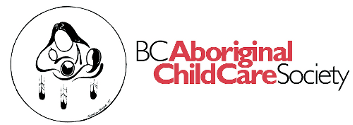"An altogether different approach" (Record no. 1135)
[ view plain ]
| 000 -LEADER | |
|---|---|
| fixed length control field | 02914nab a22002177a 4500 |
| 003 - CONTROL NUMBER IDENTIFIER | |
| control field | BCACCS |
| 005 - DATE AND TIME OF LATEST TRANSACTION | |
| control field | 20181113062552.0 |
| 008 - FIXED-LENGTH DATA ELEMENTS--GENERAL INFORMATION | |
| fixed length control field | 100412s2011 onc s 000 0 eng d |
| 040 ## - CATALOGING SOURCE | |
| Original cataloging agency | BCACCS |
| 245 14 - TITLE STATEMENT | |
| Title | "An altogether different approach" |
| Statement of responsibility, etc. | Jessica Ball, Marlene Lewis |
| Medium | [electronic resource] : |
| Remainder of title | roles of speech-language pathologists in supporting Indigenous children's language development |
| 260 ## - PUBLICATION, DISTRIBUTION, ETC. (IMPRINT) | |
| Date of publication, distribution, etc. | 2011 |
| 300 ## - PHYSICAL DESCRIPTION | |
| Extent | 1 online resource (p. 144-158) : |
| Other physical details | digital, PDF file |
| 520 3# - SUMMARY, ETC. | |
| Summary, etc. | Indigenous children are a rapidly growing population that has unmet needs for programmatic supports to ensure optimal language development outcomes and for assessment and intervention to address speech and language delays and disorders. Seventy members of the Canadian Association of Speech-Language Pathologists and Audiologists who had at least two years of practice experience with young First Nations and/or Inuit children completed an original questionnaire asking for their perspectives on the relevance and utility of their professional preparation, goals, tools, and funding for meeting the needs of young Indigenous children. Among respondents, 79% (n=55) called for "an altogether different approach." Statistical analyses of quantitative data showed almost complete agreement among speech-language pathologists (SLPs) on rated items. They uniformly emphasized, for example, an urgent need for repeat screening of Indigenous children from birth through age five, and the perceived importance of creating new screening tools specifically for Indigenous children. This article focuses on content analyses of S-LPs responses to open-ended questions in which they expanded upon their ratings, explaining their views of the need for distinctive areas of emphasis when S-LPs work with Indigenous children. Respondents identified the need for greater investments in community-based, capacity-building activities compared to individual-focused clinical treatment, and greater use of observation, criterion-referenced and dynamic assessment methods and language facilitation strategies that are customized with reference to the child's home language environment. They emphasized understanding the cultural context of practice, building and calling upon collaborative relationships with family and community members, and situating practice within infant and child development programs that facilitate culturally congruent communication skills of all children and caregivers in a family or community. |
| 650 #0 - SUBJECT ADDED ENTRY--TOPICAL TERM | |
| Topical term or geographic name as entry element | Children |
| 9 (RLIN) | 81 |
| General subdivision | Language |
| 650 #0 - SUBJECT ADDED ENTRY--TOPICAL TERM | |
| Topical term or geographic name as entry element | Language acquisition |
| 9 (RLIN) | 90 |
| 650 #0 - SUBJECT ADDED ENTRY--TOPICAL TERM | |
| Topical term or geographic name as entry element | Child development |
| 9 (RLIN) | 98 |
| 700 1# - ADDED ENTRY--PERSONAL NAME | |
| Personal name | Lewis, Marlene |
| 9 (RLIN) | 99 |
| 773 0# - HOST ITEM ENTRY | |
| Title | Canadian Journal of Speech-Language Pathology & Audiology |
| Related parts | Vol. 35, no. 2 (2011), p. 144-158 |
| 856 40 - ELECTRONIC LOCATION AND ACCESS | |
| Uniform Resource Identifier | http://209.217.105.25/english/resources/database/files/2011_CJSLPA_Vol_35/No_02_103-213/Ball_Lewis_CJSLPA_2011.pdf |
| Public note | Full text |
| 942 ## - ADDED ENTRY ELEMENTS (KOHA) | |
| Source of classification or shelving scheme | |
| ARTICLE | Journal Article |
No items available.
